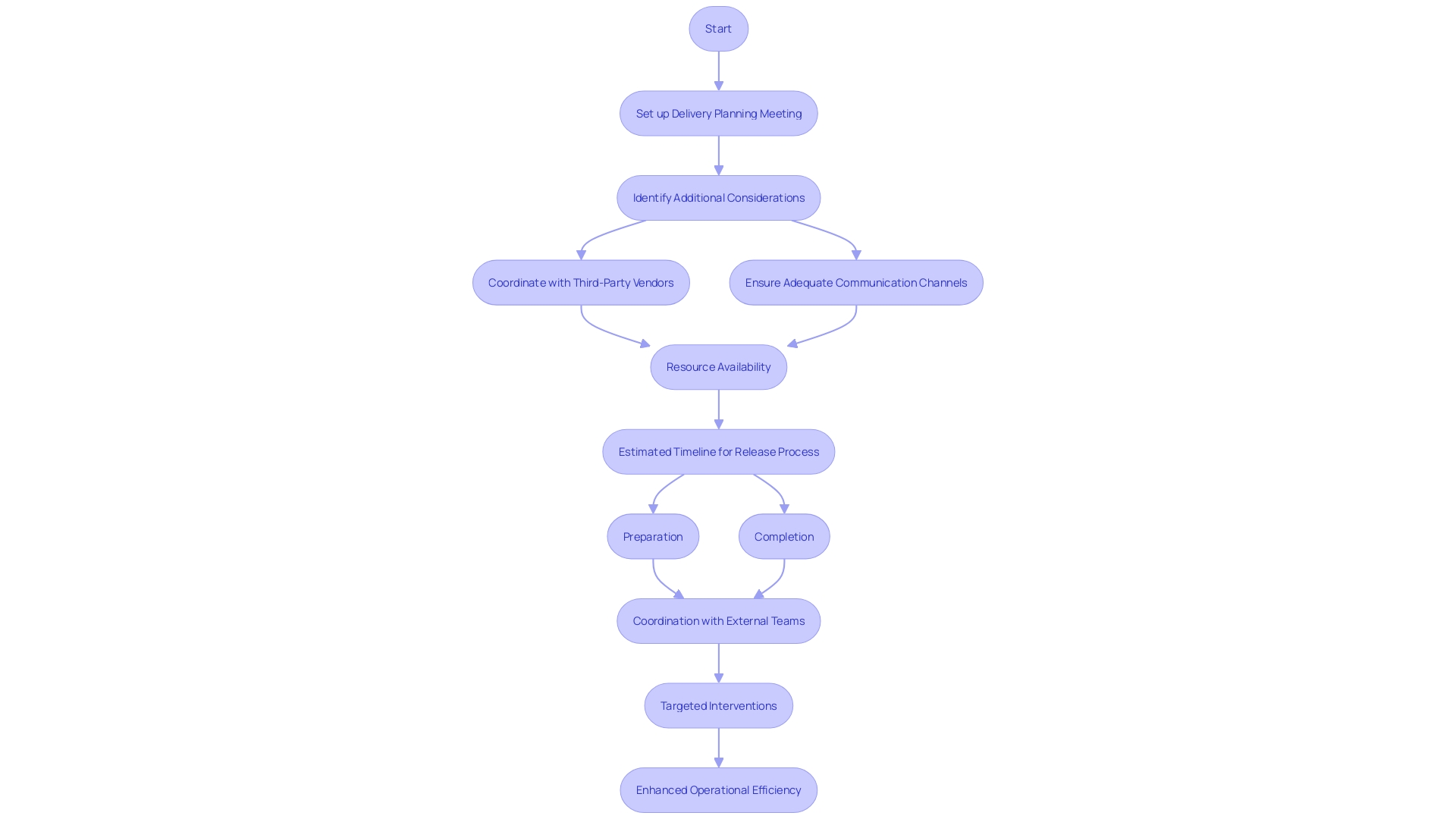Optimizing Your Focus Funnel: Strategies for Enhanced Productivity

Introduction
Navigating the complex landscape of modern business demands a keen understanding of productivity and efficiency. The productivity funnel emerges as a transformative framework, guiding organizations to manage tasks and priorities with precision. By visualizing the journey from task inception to completion, the productivity funnel illuminates potential bottlenecks and streamlines workflows.
This proactive approach, exemplified by methodologies like Kanban, empowers teams to adapt swiftly and maintain peak efficiency. Real-world success stories, such as Delivery Hero’s enhancement of IT service delivery, underscore the tangible benefits of reengineering processes. Additionally, the rise of task mining technologies, like those from ServiceNow and UltimateSuite, highlights the growing importance of detailed workflow analysis.
Embracing these tools and strategies can significantly enhance organizational productivity, driving continuous improvement and sustained success.
Understanding the Productivity Funnel
The productivity funnel is an essential structure for organizing activities and prioritizing efforts effectively. By visualizing how activities progress from inception to completion, organizations can pinpoint bottlenecks and streamline processes. For instance, the Kanban method, widely used in various industries, encourages continuous reassessment of task priorities based on evolving project needs and group capacity. This dynamic approach ensures that groups can adapt to changes swiftly and maintain efficiency.
In practice, Kanban utilizes a pull system where work is only moved to the next stage when there is capacity, allowing members to focus on high-impact activities. This approach not only emphasizes the significance of prioritizing activities but also enables team members to choose responsibilities based on their urgency and importance, fostering a more involved and proactive workforce.
A real-world example of overcoming inefficiencies is Delivery Hero, a global delivery platform. They encountered considerable efficiency challenges with employees being locked out of their accounts, leading to an average downtime of 35 minutes per incident. By reengineering their IT service delivery processes, they eliminated these bottlenecks, demonstrating how targeted interventions can significantly enhance operational efficiency.
Additionally, ServiceNow’s acquisition of UltimateSuite underscores the growing importance of task mining in identifying workflow inefficiencies. This technology enables companies to comprehend work processes in detail, allowing them to tackle issues and enhance efficiency.
Overall, leveraging such frameworks and technologies enables organizations to allocate resources effectively, ensuring maximum results and fostering a culture of continuous improvement.

Key Components of a Productivity Funnel
A well-structured productivity funnel is essential for groups to convert ideas into actionable outcomes systematically. This funnel consists of several key components: activity selection, organization, execution, and assessment. ‘Choosing assignments involves identifying the most impactful activities that align with the team’s goals, ensuring that every effort contributes to the larger objective.’. Organization involves arranging these activities in a way that improves understanding and concentration, frequently by employing resources and approaches such as snapshots, experience maps, and opportunity solution trees. Execution, the next component, focuses on carrying out activities efficiently. Research has demonstrated that instruments such as AI-driven Copilot can greatly enhance efficiency by accelerating the pace of work completion without sacrificing quality. The last element, assessment, entails reviewing the completed assignments to pinpoint areas for enhancement and acknowledge achievements. This approach not only fosters a productive environment but also encourages continuous learning and adaptation. Findings from AI and performance initiatives indicate that encompassing a broader spectrum of activities and roles can further strengthen this funnel, creating a solid framework for promoting group success.

Strategies for Enhancing Productivity
Enhancing productivity within the funnel requires intentional strategies that promote efficiency and effectiveness. Dividing tasks according to urgency and significance enables groups to prioritize efficiently. Leveraging automation tools can reduce manual workloads, allowing for greater focus on strategic initiatives. Continuous monitoring of progress ensures that teams remain agile and responsive to changing demands.
Public-sector organizations function most effectively when they create from the viewpoint of the individuals they assist, utilize data efficiently, and adjust swiftly to gain efficiency advantages. In today’s competitive business environment, enhancing efficiency has become a key focus for many companies. Various strategies, such as efficient time management, setting clear objectives, and creating realistic schedules, can help achieve this objective.
The recent Gallup survey emphasizes that while 67% of US employees never utilize AI resources at work, those who do experience considerable advantages in output and effectiveness. For example, the initial iterations of Copilot applications have demonstrated a significant rise in execution speed without sacrificing quality. This efficiency increase suggests that utilizing AI and automation tools can be a game-changer for many organizations.
By applying metrics such as daily work processing efficiency, which offers insights into how effective a team is on a typical workday, companies can make informed decisions resulting in enhanced output. Regular observation and improvements can result in substantial growth in efficiency over time. Therefore, it’s crucial to remain agile and responsive to the constantly evolving market demands, ensuring that efficiency strategies are continuously refined and optimized.

Integrating Learning and Improvement Loops
Creating a culture of learning is the cornerstone of sustained productivity. By integrating robust feedback mechanisms, groups can critically assess outcomes and pinpoint areas for enhancement. This iterative approach not only refines current workflows but also sparks innovation, drawing insights from past experiences to shape forward-thinking strategies. For instance, Learning Pool Platform exemplifies this by delivering personalized workplace learning at scale, using intelligent data to tailor training to individual needs in real-time.
Moreover, fostering a high-involvement, collaborative environment is crucial. Forty years of Blanchard research underscores that the most effective leadership style aligns with the developmental needs of team members, promoting a culture of continuous improvement and resilience. This mindset transforms the efficiency funnel into a dynamic engine of growth, akin to Google’s open-source projects, which encourage experimentation and collaborative progress.
In the realm of technological advancements, company-wide encouragement to engage with AI tools has proven beneficial. Despite only 39 percent of employees receiving training, those who do are better equipped to innovate and improve productivity. As organizations continue to prioritize maximizing creativity and profitability, the transition from individual contributor to effective manager becomes essential. Developing self-leaders within teams provides a competitive advantage, ensuring that every member contributes to a thriving, innovative, and productive work environment.

Conclusion
The productivity funnel serves as a pivotal framework in today’s fast-paced business landscape, enabling organizations to effectively manage their tasks and prioritize their efforts. By visualizing the journey from task inception to completion, teams can identify bottlenecks and streamline processes, ultimately driving operational efficiency. The integration of methodologies like Kanban illustrates the importance of adaptability and continuous reassessment, empowering team members to focus on high-impact activities and fostering a proactive workforce.
Key components of the productivity funnel—task selection, organization, execution, and assessment—are essential for converting ideas into actionable outcomes. By leveraging automation tools and AI technologies, organizations can enhance their productivity and efficiency, ensuring that every task aligns with broader objectives. The emphasis on continuous monitoring and strategic prioritization not only promotes agility but also facilitates informed decision-making, enabling teams to respond effectively to evolving demands.
Creating a culture of learning and improvement is crucial for sustained productivity. By implementing feedback mechanisms and fostering collaboration, organizations can refine workflows and ignite innovation. Encouraging engagement with AI tools and providing necessary training empowers employees to become self-leaders, driving creativity and productivity within their teams.
As organizations embrace these strategies, they position themselves for continuous growth, ultimately transforming challenges into opportunities for success.
